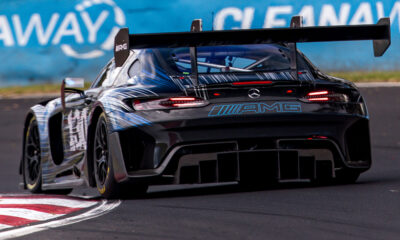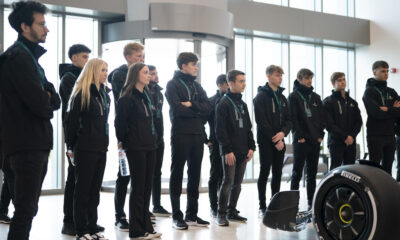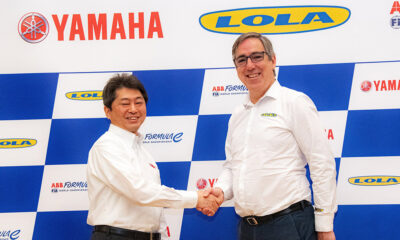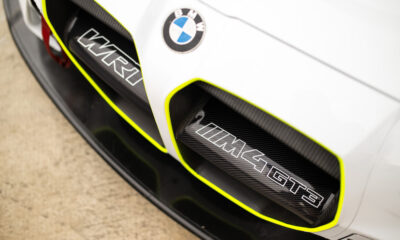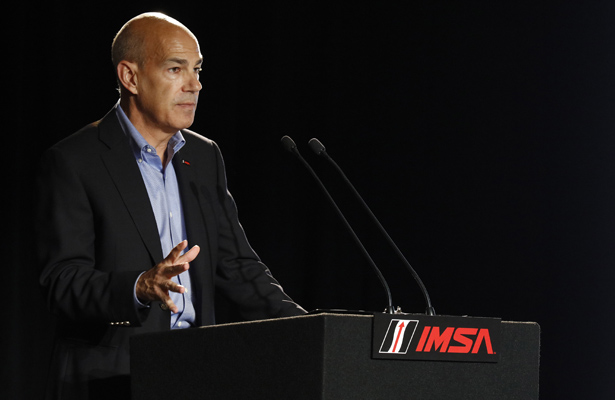
Photo: IMSA
Scott Atherton has been a driving force in the U.S. sports car racing scene for the last 15 years, having helped build the American Le Mans Series into one of the world’s premier championships, alongside founder Don Panoz, and strengthening its relationship with the ACO every step of the way.
READ: Behind the Title, Scott Atherton, Pt. 1
The former Domino’s Pizza executive, who now serves as the President and COO of IMSA post-merger, completes his remarkable story in the second and final part of “Behind the Title.”
What was your biggest achievement?
“The most satisfying result was the process of bringing Honda/Acura into the American Le Mans Series. That started with a handshake and a cold call at the Detroit Auto Show three years previous.
“That first handshake and introduction resulted in the opportunity to make a formal presentation at their headquarters in California, which then resulted in Robert Clarke being assigned to dig deep into what this opportunity meant.
“[It was an experience] to go through that vetting process in such a formal way and building the relationships and rapport with Robert and the people he answered to, within senior management of Honda and Acura, and then having that group from the senior senior management from Japan also involved.
“It all came down to a phone call when Robert said [they had green-lighted the program.
“It was an incredible time because we had Audi fully engaged. We had Porsche racing with the Penske cars and had three top-tier Acura teams come in. It was the high water mark of the American Le Mans Series. Having been part of that process, from that initial handshake at the Detroit Auto Show to the finished result was the most satisfying.”
How has it been working with the ACO?
“The early days of the American Le Mans Series was much more different and more rigidly controlled by the ACO. It was the first time the ACO had licensed the Le Mans brand and they were extremely protective.
“Every weekend we had at least three or four, five and sometimes up to six ACO representatives that were literally hovering. Every step that Charlie Cook made in scrutineering was monitored. How we presented the event and referenced it on television… It was anally protective and very difficult.
“I remember the first time we approached them with the idea of putting a title sponsor on Petit Le Mans: absolutely not. ‘That which is not possible is forbidden.’ That’s the famous quote, with waving fingers.
“That’s how it started. It was overly controlled and stifled what we could do. But we were blazing a trail every time we went out. There was no precedent in anything we were establishing.
“If you jump ahead to the next era with Jean-Claud Plassart… New president, new leadership in just about all of the important areas and a much looser environment. They trusted us. We trusted them and we demonstrated that we weren’t going to abuse their brand.
“I think many would say we helped the ACO rebuild the Le Mans brand, certainly in America. The Steve McQueen movie was a long time ago. There was a whole generation that didn’t know who Steve McQueen was and never heard of Le Mans until the American Le Mans Series came online.
“I remember Jackie Ickx pulling me aside one evening during a function at Le Mans and expressing his appreciation for what Don Panoz has done to resurrect, not just the Le Mans brand, but really revitalize the 24-hour race. That coming from a guy like Jackie Ickx meant a lot.
“You skip ahead to where we are today. Pierre Fillon, Vincent Beaumesnil, the whole relationship we have with Gerard Neveu… It would be hard to say the relationship and dynamics between the two organizations now have almost anything in common with where it started.
“There’s a partnership there and over the last 15 years, there’s real friendships that have developed as well.
“I know when we first announced the merger, many, especially those closely tied to the American Le Mans Series, thought that’s it. The bell is tolling; it won’t be far in the future that the Le Mans link will be a distant memory.
“There was a time that I actually thought that as well. The whole time we were operating separately (ALMS and GRAND-AM), all we ever heard about was Jim France wants total control over all aspects of his motorsports and we’re not going to borrow anything from anyone any more that we would allow them to borrow from us.
“After the merger was announced, flying over to France for the first time to introduce Jim to Pierre, Ed Bennett to that whole management team… Soon after those introductions occurred and everyone had enough time to soak it in… I think we have a stronger relationship that’s ever existed.
“I remind the ACO every once in a while — I do it with a wink and an elbow — but Pierre is the third ACO president that I’ve worked with. I don’t say that egotistically, other than in good humor. But the fact is there’s been quite an evolution over the last 15 years and I feel very fortunate to be a part of it.”
Do you have any regrets in your career?
“The one regret I do have is that we didn’t bring the two sports car platforms together sooner. There was two times that were legitimate, genuine efforts that had substance behind it. There was an annual rumor and of all those annual rumors, there’s two examples of a real concerted effort.
“Knowing what we know now, everyone involved would have wished we would have done it sooner.”
Where do you see motorsports in ten years?
“Ten years is two lifetimes in this industry so it’s very difficult to project that far out. I believe that motorsports, in order to thrive, has to remain relevant, not only from a technology perspective but also an entertainment perspective.
“There is a whole different mindset of a younger generation that’s following our sport now and what their expectations are for content. That candidly is a challenge for us because of the fundamentals we represent. We are endurance racing and that implies a big commitment of time.
“I think energy will continue to be an increasingly important topic throughout the industry. The embrace of electrification of mobility will have to become a core element, I believe, in all forms of motorsport. Maybe ten years is too early for that to come to omnipresent but I don’t see any other way around it.
“Right now we’re in this very pleasant period of extremely low energy costs. But to suggest this will continue unabated is a naive perspective to take. Part of us remaining relevant is to make sure we’re accelerating the process of defending an ultimate solution as opposed to buying time and staying the course.
“I’m an interested follower of Formula E; I’m a great admirer of the technology being showed in LMP1. I think those are leading-edge examples in both cases.
“I’m also pleased with how we’re positioned, especially when it comes to manufacturer involvement, in offering an attractive opportunity to race what they sell and develop technologies here that are linked back to what’s coming down the assembly line now.”
BEHIND THE TITLE: Pierre Fillon / Stephane Ratel (Pt. 1) & (Pt. 2) / Gerard Neveu


















